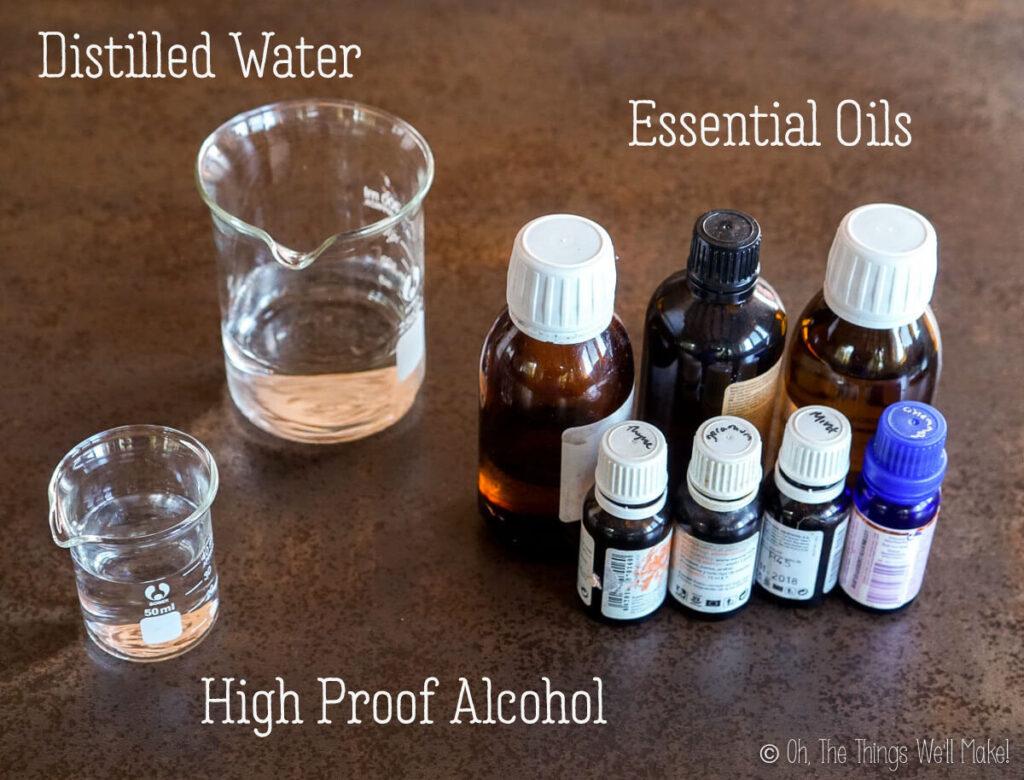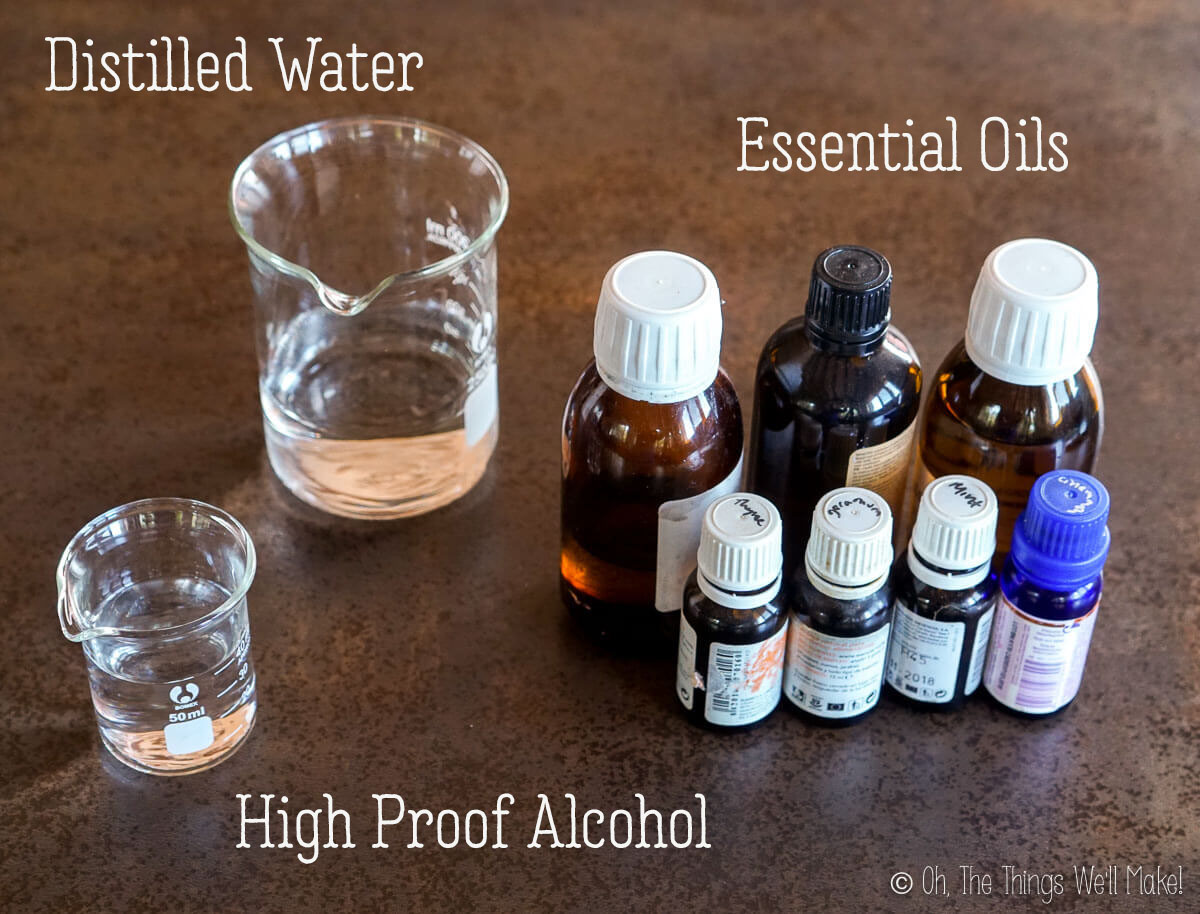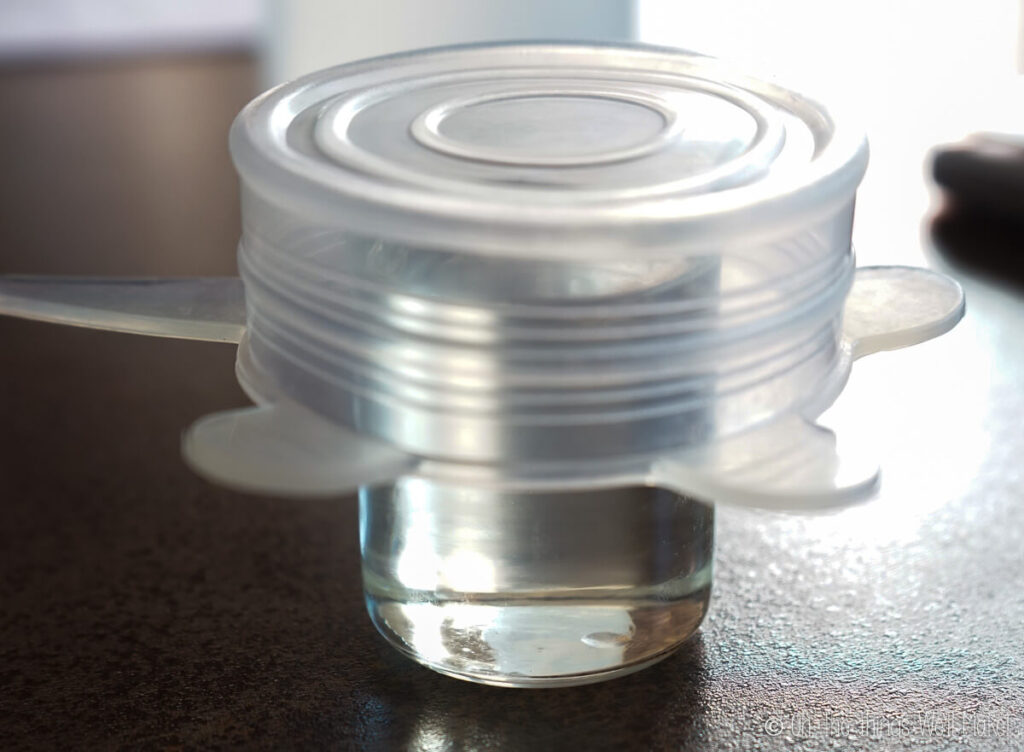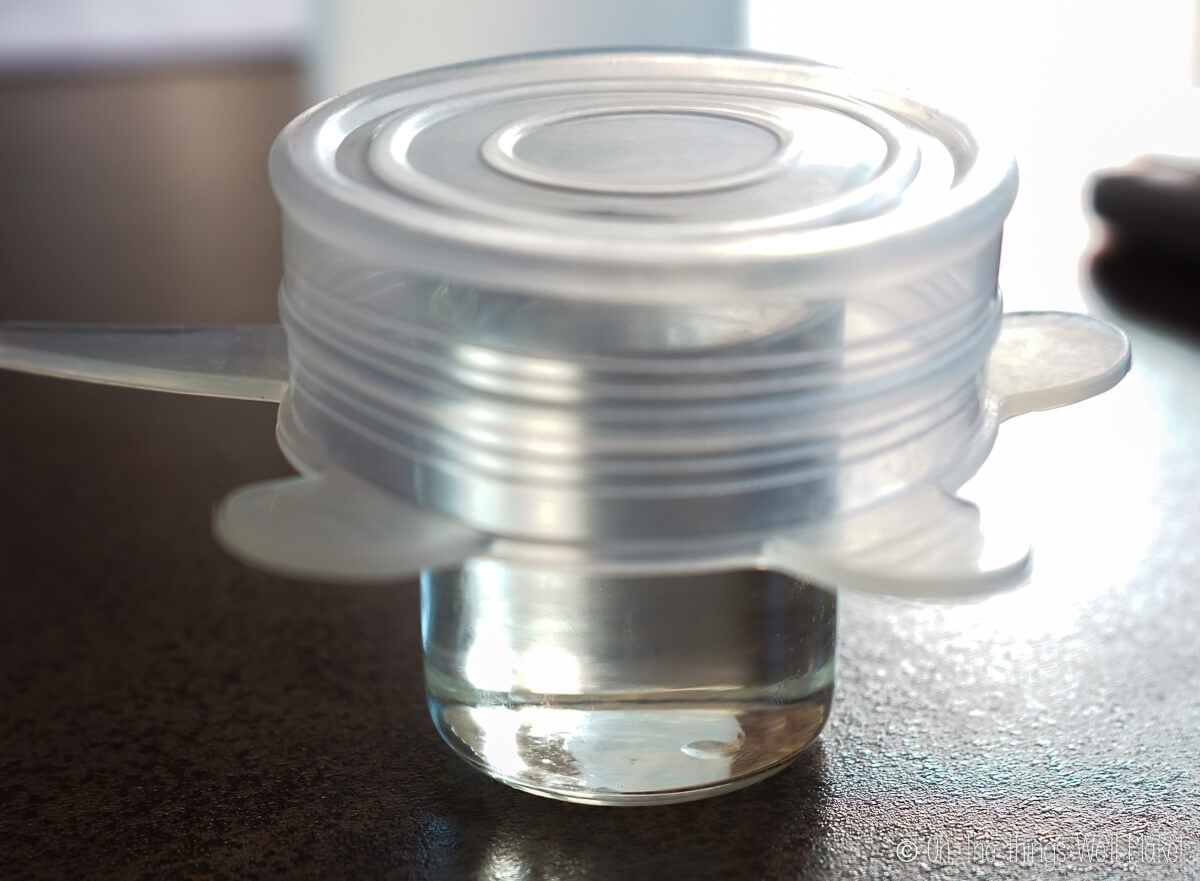Help keep lice away with this easy homemade lice prevention spray made with essential oils. Also, learn how we rid ourselves of lice naturally.
While I don’t normally share things that are considered intimate or embarrassing, every once in a while I stumble across something that warrants sharing with the world in the hopes of helping someone else. Since I’m already speaking quite freely, I’ll admit that we also tried many, many remedies and were never able to rid ourselves of pinworms naturally. I was really hoping to be able to banish those buggers and share my story here. (By now, I’m convinced that it’s impossible and anybody who thinks they have really hasn’t.)
You are watching: Homemade Lice Prevention Spray (and Natural Remedies)
Luckily, some pests are easier to wipe out than others.
So begins my story about our lice experience…
My first lice repellent spray
Many years ago, when my son first started school, I decided to make a lice repellent spray for my son. His school, as most schools around here, was a breeding ground for lice. In fact, they’d often send us reminders to be proactive about preventing and checking for lice.
I spent many hours researching essential oil blends before mixing up my first spray. After reading a post written by a guy who had done essential oil lice experiments at home, I based many of my oils on his findings. (Sadly, I don’t remember the details and can’t find it anymore to credit him.)
My first homemade lice prevention spray combined many different oils. It worked quite well for us for several years. While I will share the recipe for that original spray below, I’ve decided to update this post with new options.
Is it effective?
While I can’t say for sure if my spray is actually effective, I can give you some anecdotal evidence that it may help prevent lice.
When my son was growing up, I occasionally checked his hair with a nit comb and never found any lice. Meanwhile, other parents of his classmates were complaining about how their kids were constantly being reinfected in school.
When family members asked me if my son had ever gotten them, they seemed very surprised that my answer was no. I mentioned using an essential oil mix in a homemade lice prevention spray, but they blew it off. They told me that they had tried using tea tree essential oil with my niece (not sure how) and that she still kept getting reinfected.
Over the years, I continued to use the spray without issues (or lice infestations), but the naysayers had me doubting its effectiveness.
With time, I figured that my son was one of those lucky kids who was immune to lice. Just like mosquitos are more drawn to certain people, I suspected that lice probably are the same way. (Incidentally, my son attracts mosquitos like you couldn’t imagine!)
So, in the summer of 2016, when I ran out of my spray, I didn’t bother making more. Instead, I used water to style my son’s hair in the morning.
What happened when I stopped using it?
You can probably guess where this is leading…
I had figured that between the chlorine in the pool, his minimal interaction with other kids during the summer, and his now assumed immunity to lice that my son wouldn’t have any issues with them.
So, when he started scratching his head, I didn’t think about lice. In fact, I didn’t even consider them when my own head started to itch. (Why should I? I haven’t had lice since grade school!)
I had gotten into the habit of occasionally checking his hair for lice and didn’t see anything unusual other than a couple of areas of dry, irritated scalp. When you have a son with atopic skin, though, that isn’t really that unusual.
My mother-in-law looked over his head and didn’t see anything either. She had a better idea of what to look for, having helped my niece out several times. I, on the other hand, was going on pictures of lice that I’d seen on the internet.
Lice and neck rash…
All seemed well until I took my son and my niece to a waterpark. I was testing out a homemade sunscreen and probably wasn’t able to apply it very well to my back. At least that’s why I thought my neck was pink that night. The next morning, though, I had a huge, itchy, red rash!
I assumed it was a reaction to the sun or the chlorine in the pool. Or maybe it was the milk I’d added to my coffee that morning after avoiding dairy products for a while?
The rash didn’t improve after several days, so I finally went to the doctor. I had put it off, thinking it would be a waste of time. I figured they’d prescribe a steroid cream and an antihistamine and send me on my way. (Having a son with atopic skin, I’m pretty used to the drill.)
Of course, I wasn’t wrong. She sent me home with a steroid cream and an antihistamine without a lot of insight as to what could have caused the rash. (Perhaps the sun? Are you SURE you aren’t using a new shampoo?)
She did do an exam on my head, hair and neck, but never mentioned that lice could be a cause. She did mention that I had a bit of dandruff and that it could be contributing to my overall itchiness.
After a few days of using apple cider vinegar rinses and coconut oil on my hair overnight in an attempt to rid myself of dandruff, I felt a bit less itchy. (Looking back, it’s not surprising. Both of those are natural remedies for dandruff and lice!)
Still, I decided to try an anti-dandruff shampoo. While I was shopping, I noticed a nit comb near the shampoos. Since I couldn’t find mine, I decided to buy a new one.
Checking for Lice
I got home, and decided to comb my hair with the new nit comb “for fun.” That’s when I finally came to the rude awakening as to what could be causing my rash!
This is what I found…
Could my neck rash also be due to lice?
Researching it, I found many pictures of lice-provoked neck rashes similar to mine! (Which makes me wonder… If lice are so prevalent here, why didn’t the doctor mention lice being a possible cause? Knowing that tidbit of information could have saved me days of discomfort.)
Read more : Essential Oils for Broken Bone
Once I found them, I immediately began to remove them naturally from both my son and me. I also immediately made a new batch of lice prevention spray!
Ingredients
My original spray used a number of essential oils and distilled water. I combined 8 ounces of water with 20 drops of tea tree oil, 15 drops of eucalyptus oil, 10 drops each of geranium, thyme, lavender, and peppermint oils, and 5 drops of cinnamon leaf oil.
While I continue to use those oils, I’d like to suggest using fewer oils for younger children. I also now use either alcohol or a preservative when formulating my essential oil sprays!

Why change the recipe?
While the spray was effective, I had some concerns with sharing it as such on my blog. I figured I should update the recipe (or at least offer new options).
Age appropriate spray
First, my original spray probably wasn’t the best option for use on young kids.
When I formulated that first recipe, I was oblivious to the fact that certain oils, like eucalyptus and peppermint, may cause issues with young children. They generally say to avoid or at least or use extreme caution when using peppermint essential oil with children under the age of 6 and eucalyptus essential oil with children under 10.
Interestingly enough, our pediatrician here in Spain prescribed him a natural decongestant for vaporizing when he was quite young and had a cold. It included eucalyptus, peppermint, and other essential oils. There were no warnings on the label about not using with young children. While that makes me wonder how common the problems with those oils really are, it’s always best to err on the side of caution. Don’t you think?
Water and oil doesn’t mix
My other concern deals with combining oils with water. Any time water is combined with other ingredients, a preservative should be used to prevent microbial growth. When water and oil are combined, an emulsifier is also normally used to help keep the water and oil together.
I wasn’t too concerned about the separation of water and oil as it’s easy enough to shake the spray before each use. I’ve seen many bi-phase products for sale with instructions to do just that. (My salt spray for hair is an example.)
More of concern, though is the potential for microbial growth. I never had problems with that spray. Or, at least I never knew I had problems with it.
Maybe it’s because essential oils have some antimicrobial properties. When using only distilled water and essential oils, it might be enough to stay clean enough to not cause issues. (Perhaps because they stay separated and each is self-preserving on its own. That might be enough.) That’s a big maybe, though.
What’s especially concerning is that many bacteria are invisible to the eye. Home formulators generally aren’t doing microbial testing on homemade products like this one, so it’s always best to err on the side of caution.
That’s why I no longer feel comfortable making a spray like that without adding some sort of preservative. (Ignorance is bliss, I guess.) 😉 I’ll show you several possible ways to properly preserve your spray!
For more information about preserving and emulsifying homemade products, check out my beginner’s guide to natural preservatives and my guide to emulsifiers.
Essential oils for lice prevention
The following oils have been shown to be effective against lice to some degree:
- Lavender oil
- Tea tree essential oil
- Clove essential oil
- Cinnamon leaf essential oil (Can be irritating to skin, so keep concentrations low.)
- Geranium essential oil
- Peppermint essential oil (Caution for kids under 6- can also irritate skin in high concentrations.)
- Nutmeg essential oil (Caution for kids under 6- can also irritate skin in high concentrations.)
- Aniseseed essential oil (Caution for kids under 6- can also irritate skin in high concentrations.)
- Eucalyptus essential oil (Caution for kids under 10)
- Neem oil (Not an essential oil, but also possibly helpful for prevention.)
Of the above, the safest essential oil to use with very young kids is lavender oil, but it may not be the most effective for lice. Tea tree oil is very popular, probably because it’s both safe for use on most people and also likely effective. The next 3 oils on the list are also generally safe for young children (over 6 months) as long as the concentrations are kept low. (3-5 drops per ounce of carrier oil for under 2 years old, up to 20 drops per ounce ages 2-6, up to 30 drops/oz. ages 6+.)
From my research, I think that an effective spray should include various oils. The most effective sprays will include not only tea tree oil, but also eucalyptus and peppermint oils. The problem is that you should be very cautious with those oils if you have younger children. Homemade lice spray using lavender and tea tree is very popular because those oils are the safest for use on all kids. Unfortunately, alone, they may not be the most effective.
As your kids grow up, consider increasing the possible effectiveness of your spray by adding in other oils and increasing the concentration used. Each oil can kill off or repel lice using different mechanisms.
Effectiveness of essential oils for lice prevention and treatment
You may doubt the effectiveness of making a spray with essential oils to help prevent lice, but there is some scientific evidence to support the idea.
For preventing lice
One study showed some promise when studying tea tree, lavender, and peppermint essential oils, and coconut oil vs. DEET. “Tea tree and peppermint caused the most repellence, and tea tree and lavender prevented some blood feeding on treated skin.” Unfortunately, it was their opinion that the prevention came from the slippery nature of the oils and not from their repellence. They weren’t convinced enough about the results to promote using any of them.
On the other hand, another study found that many oils were effective against lice in an alcohol spray. They studied aniseed oil, cinnamon leaf oil, red thyme oil, tea tree oil, peppermint & nutmeg oil (together), rosemary oil, and pine oils. All of them except rosemary and thyme were found effective in preventing lice infestation.
The effective components of the oils were thought to be phenols, phenolic ethers, ketones, and oxides (1,8-cineole). The 1,8 cineole is also the component of eucalyptus oil that is may cause central nervous system and breathing problems in some young children.
In the treatment of lice
For the treatment of lice, they have found that using a combination of tea tree and lavender essential oils or using a suffocation method were both more effective than pyrethrins and piperonyl butoxide.
Another study found eucalyptus oil to be an effective alternative for treating insecticide-resistant head lice. Eucalyptus oil and clove oil were both studied and eucalyptus was found to be the most effective. In an 8% spray, it worked effectively against lice infestation.
In yet another study, a lotion made with neem oil and eucalyptus oil was used weekly for the treatment of lice. They found the mixture to be effective in killing both lice and their eggs!
Procedure
Depending on the ingredients used, the procedure will be different. I’m giving several options because people have varying ideas about what they want to avoid in their personal care products.
Formulating with alcohol
To make a spray that doesn’t separate, the ideal solution is to use high-proof alcohol (over 75%, preferably higher) in your spray. (You can use pharmacy-grade alcohol.)
Alcohol works as both a solubilizer that incorporates the oils into the water and as a preservative. Unfortunately, only a small amount of oil can be incorporated using alcohol. If your spray only uses essential oils, you should be able to solubilize them into the spray with only alcohol, but if you want to incorporate other oils like neem oil, some of the oils will likely separate from the water. (While most essential oils solubilize well in alcohol, some thicker oils might pose a problem.)
Another issue is that some people prefer not to use alcohol in their cosmetics. They may be afraid of the drying qualities of the alcohol or may have religious or other concerns. (Some countries limit access to buying alcohol, but most should have pharmaceutical-grade alcohol available.)
Read more : How Long to Smoke a 3lb Brisket (+ Easy Tips)
Generally, alcohol isn’t a problem in hair sprays as the alcohol evaporates away before it has a chance to dry out the hair. (In fact, some probably evaporates even before it reaches your hair.) When I took my natural haircare courses, one included a perfume hair spray using only alcohol and essential oils.
Option 1: alcohol spray
The easiest way to make a spray is to only use alcohol and essential oils. In that case, it’s really only a matter of mixing the oils with the high-proof alcohol. The alcohol will solubilize the oils and the product is ready to use immediately.
Option 2: alcohol and water spray
If you’d like to use alcohol, but would prefer to lower the percentage of alcohol in the final product, you can use a combination of water and alcohol in your spray. The higher the concentration of alcohol, the more oils that can be incorporated into the spray.
To make a spray with both alcohol and water, you first need to combine the essential oils with the high-proof alcohol. This solubilizes them. Once they are incorporated into the alcohol, it’s best to cover the mixture and allow it to rest for a while before adding the water. This helps ensure a more stable mixture.
After the resting period, Slowly add in the water. Don’t be alarmed if it looks cloudy. That’s perfectly normal.
-
Mix oils and alcohol and cover. -

Add water. -

If too much oil or water is added, the oils may separate out.
If you add too much water (or added too much oil), you risk the separation of the oils and water. (The final alcohol content should be at least 20-30% for preservation purposes anyway.)
Bi-phase product with preservative
If you’d prefer to avoid alcohol, you can make a bi-phase product in which the oils and water will separate between uses. Before spraying, you would need to shake the product to disperse the oils within the water. To ensure safety, I’d suggest using a broad-spectrum preservative just as you would in most of my other homemade cosmetics on the blog following the recommended dosage for the chosen preservative.
Making a bi-phase spray is also very simple. Just combine the oils, water, and preservative in a spray bottle and shake before each use.
Formulating your recipe
Because each person’s needs and preferences are different, rather than give you one recipe to use, I prefer to give you tips for formulating the perfect recipe for you!
Apart from using alcohol or not (and varying the concentration of alcohol used), you can change up the recipe by varying the concentration of essential oils used.
Essential oils concentration
When I first shared my recipe, I measured in drops. While that is a very common method of measuring essential oils, it’s very inaccurate.
I used about 10 drops per ounce of spray in my recipe, which is said to be around 1%. The problem is that dropper bottles vary greatly in the amount of oil dispensed. Even the same dropper would likely dispense a different amount of a thicker oil vs. a thinner one.
This recipe is very forgiving, so while I recommend using a small, inexpensive jeweler’s scale for measuring out small amounts of ingredients, you can probably get away with estimating by volume in this case. Still, I prefer to share the recipe by weight. (If using a preservative, it is important to get the amount right. In that case, I think a scale is necessary!)
For use on children, I’d suggest keeping the amount of essential oils used around 1-3% of the recipe. Start with smaller amounts for younger children and increase the dosage as they grow. Because this will be applied to the hair and not the skin, you can increase the amount to 5% for a stronger fragrance and effectivity for older children and adults.
Especially when using higher concentrations, be careful to spray on the hair only. Avoid the skin as much as possible. This is also more important when using oils that are known to cause skin irritation, and not so much of an issue when using lavender and tea tree oils.
I have never had any problems with skin irritation with my son, despite his sensitive skin. That said, I did have a mild reaction myself once when using a spray with cinnamon leaf oil on my neck. (I wasn’t as careful about focusing only on the hair when spraying on myself).
To help avoid issues, increase the percentage of the milder oils (like tea tree and lavender), complementing them with smaller concentrations of oils like peppermint and cinnamon.)

Natural lice prevention (and removal)
We were able to rid ourselves of the lice naturally and, years later, I’m happy to say that we haven’t had to deal with them again. Apart from using the spray each morning to help style the hair before going to school, there are other ways to help prevent an infestation.
Get a good nit comb!
One of the best ways to help rid our hair from the lice was to do thorough combing with a nit comb. Each night, for several weeks, I combed through our hair thoroughly. (I had my son sit in my lap and watch tv to make the process more enjoyable.) Combing with a nit comb removed the adult lice.
Preventively, combing the hair daily with a nit comb (preferable after school) helps remove any new unwelcome visitors before they can settle down and raise a family there. 😉
Coconut oil hair mask
Another way we combated the problem was with a coconut oil hair mask!
The first night, after thoroughly combing out all adult lice, I applied coconut oil to our hair. Once combed through to coat the hair thoroughly, I covered the hair with a shower cap and we went to bed. The next morning, we washed out the oil and our hair felt great!
A coconut oil hair mask works in a variety of ways. Most importantly, it helps “suffocate” and kill any remaining lice in the hair. (For that reason, using any oil could help kill off lice.)
Coconut oil itself, though, is thought to be somewhat repellent to lice. I also like using coconut oil because I’ve found that it doesn’t stain pillowcases like other oils. (In fact, sometimes I don’t use the shower cap at all!)
To help improve its effectiveness, you could even add some of the above-listed essential oils (or other oils like neem oil) to the coconut oil mask. (If you’ll recall, eucalyptus and neem oil were both shown to help kill lice and their eggs!)
Preventively, consider applying a coconut oil mask weekly. Not only will it help combat lice, but it leaves your hair soft and shiny!
Shampoos
While I haven’t personally done this, some people add tea tree oil to their shampoo to help prevent and rid themselves of lice infestations. The recommended concentration is 1-10%, which is actually quite a bit (probably because it’s a wash-off product). Others have suggested using 5-20 drops in the dab of shampoo you are using each wash.
I’m not sure how effective this would actually be in a wash-off product. (Adding it to a leave-in conditioner would probably be more effective!) While I think that using the spray, nit comb, and hair mask is enough for me, it’s another option for those who want to try it.
Video
This post was originally published on September 8, 2016. It was rewritten, adding new photos, video, and customization options in September of 2021.
Source: https://gardencourte.com
Categories: Recipe


